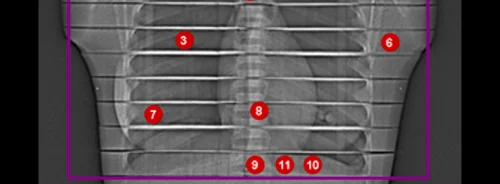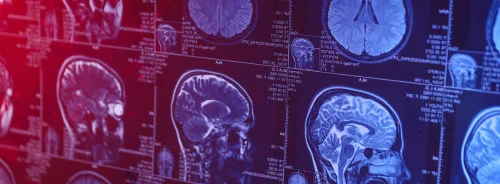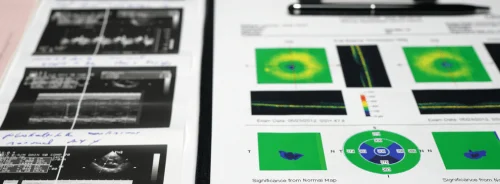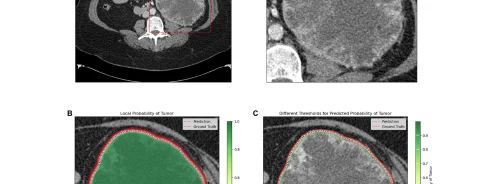Lung imaging is pivotal in diagnosing and managing pulmonary diseases, ranging from inflammation to structural disorders and malignancies. The importance of accurate imaging has surged, particularly during the COVID-19 pandemic, where the limitations of conventional chest X-rays highlighted the need for more precise tools. The advent of photon-counting detector (PCD) CT systems is a groundbreaking development in this field. These systems promise enhanced image quality and improved dose efficiency, potentially lowering the radiation exposure that has been a persistent concern in repeated CT scans. A recent study evaluates the efficacy of PCD-CT in lung imaging through the lens of thermoluminescence dosimetry (TLD), comparing it with traditional dosimetry methods.
Ultra-High-Resolution Imaging with Photon-Counting Detectors
Photon-counting detector (PCD) technology marks a significant leap in CT imaging. Unlike traditional energy-integrating detectors (EID), which convert X-ray photons into electrical signals with some loss of information, PCDs count individual photons, offering superior image quality and resolution. This is particularly advantageous for lung imaging, where detailed visualisation of small structures, such as subpleural nodules, is crucial. The study found that ultra-high-resolution (UHR) imaging using PCD-CT did not produce a higher radiation dose than standard-resolution scans. This finding is critical because it suggests clinicians can achieve higher diagnostic accuracy without increasing the patient’s radiation burden.
The study used various imaging protocols to assess the performance of PCD-CT. It compared UHR mode with standard mode across different dose levels. The results consistently showed that UHR mode delivered sharper images with better noise suppression, particularly at higher dose levels (IQ 50). Even at lower dose levels (IQ 5), UHR mode provided superior delineation of small lung structures compared to standard mode, underscoring the potential of PCD-CT in clinical settings where high image clarity is paramount.
Thermoluminescence Dosimetry: A More Accurate Measure of Radiation Exposure
Traditional methods of estimating radiation exposure in CT imaging, such as using the dose-length product (DLP), often fail to provide an accurate picture of the actual dose absorbed by the patient. This study employed thermoluminescence dosimetry (TLD) to measure the radiation dose more precisely. TLD involves using thermoluminescent materials that record the absorbed radiation dose, which is later read out by heating the material and measuring the emitted light. This method provides a direct measurement of radiation exposure in specific organs, offering a more accurate assessment than DLP.
The study revealed a significant discrepancy between the radiation doses calculated from DLP and those measured using TLD. Specifically, the effective doses measured by TLD were between 131% and 170% higher than those calculated from DLP. This finding is crucial, as it suggests that the conventional approach to estimating patient radiation exposure may significantly underestimate the actual dose, potentially leading to an underappreciation of the risks associated with CT imaging. By contrast, TLD offers a more reliable and individualised measure of radiation exposure, particularly in studies involving advanced imaging technologies like PCD-CT.
This accurate dose measurement is critical in lung imaging due to the sensitivity of thoracic organs to radiation. The use of TLD in this study highlights the need for more precise dosimetry methods in clinical practice, ensuring that the benefits of advanced imaging technologies are not overshadowed by underestimated radiation risks.
Organ-Based Tube Current Modulation: Limited Dose Reduction Potential
Organ-based tube current modulation (OBTCM) is designed to reduce radiation exposure to sensitive organs during CT imaging by adjusting the tube current as the scanner rotates around the patient. While OBTCM has been shown to reduce doses in specific scenarios, its effectiveness in the context of PCD-CT for lung imaging appears to be limited.
The study compared standard PCD-CT scans with and without OBTCM across different dose levels. Although OBTCM did result in some dose reduction, particularly in breast tissue, the overall impact was modest. The use of OBTCM reduced the radiation dose by approximately 17.5% at the lowest dose level (IQ 5) and up to 18.6% at the highest dose level (IQ 50). However, this reduction was not sufficient to outweigh the limitations imposed by OBTCM, such as the need for precise patient positioning and the potential for reduced image quality in suboptimal conditions.
Furthermore, the study found that OBTCM had no significant impact on subjective image quality assessments, regardless of the dose level. This suggests that OBTCM may offer some benefits in specific clinical scenarios, but its utility in PCD-CT lung imaging is limited. Given PCD-CT's already low dose capabilities and the superior image quality achievable with UHR mode, the study advocates for the cautious use of OBTCM, particularly in low-dose lung imaging protocols.
Conclusion
Integrating photon-counting detectors into CT imaging represents a transformative advancement in lung imaging. Achieving ultra-high-resolution images without increasing radiation exposure is a significant benefit, enhancing diagnostic accuracy and patient safety. Thermoluminescence dosimetry provides a more accurate measure of radiation exposure, highlighting the limitations of traditional dosimetry methods like the dose-length product. This study underscores the importance of precise dosimetry in evaluating new imaging technologies, ensuring that the advantages of innovations like PCD-CT are fully realised without compromising patient safety.
While organ-based tube current modulation offers some potential for dose reduction, its benefits in PCD-CT lung imaging may be limited by factors such as patient positioning and the need for precise implementation. Overall, PCD-CT with thermoluminescence dosimetry represents a promising direction for the future of lung imaging, combining superior image quality with improved safety. As this technology continues to evolve, it holds the potential to redefine the standards of care in pulmonary imaging, offering clinicians new tools to enhance diagnostic accuracy while minimising the risks associated with radiation exposure.
Source & Image Credit: Academic Radiology






